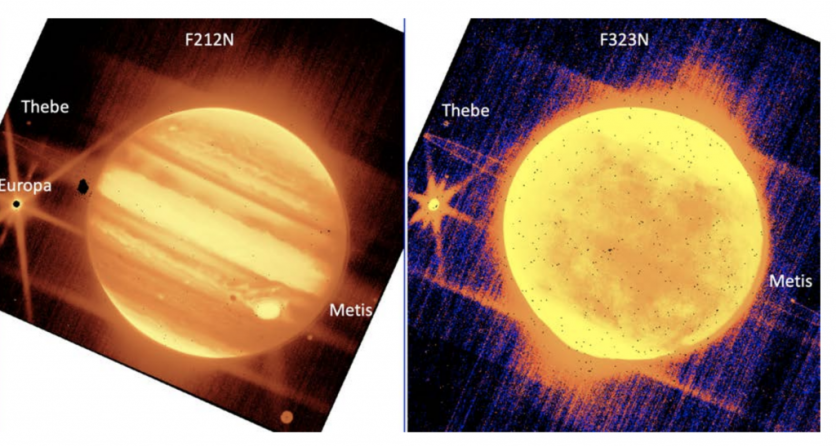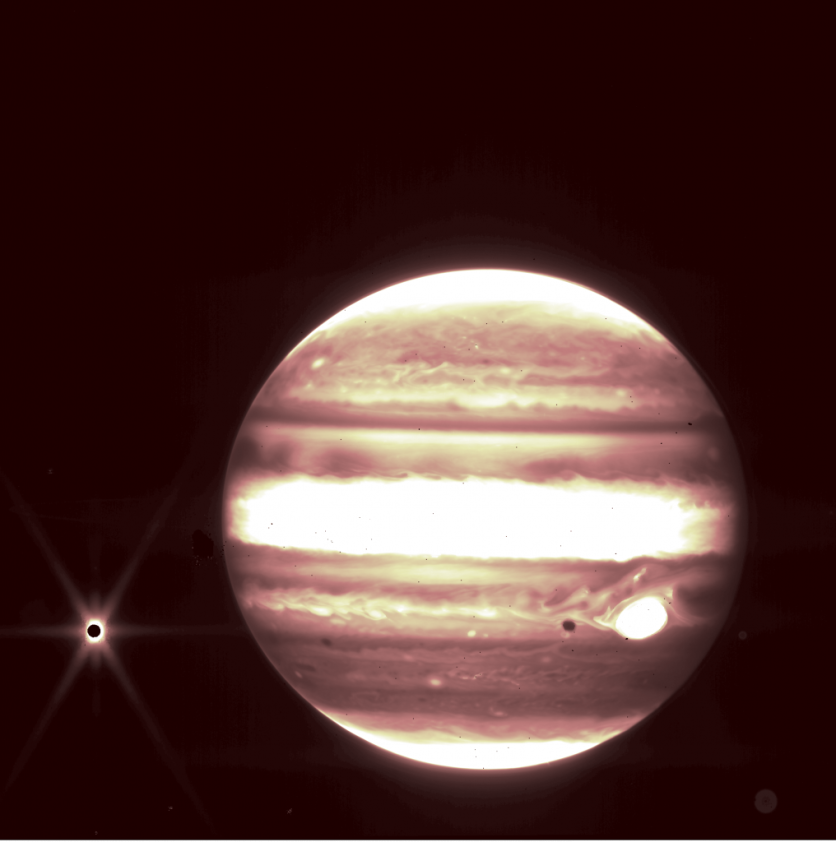NASA's James Webb Space Telescope is out here, proving that it can do so much more than looking beyond the distant universe!
The James Webb team revealed the mission's first set of incredibly precise pictures of the deep and far-off universe on Tuesday, July 12.
But it didn't stop there as the team unveiled some fascinating images of Jupiter, demonstrating the telescope's capacity to examine objects that are far closer to Earth.

The Great Red Spot
The Great Red Spot, a storm large enough to consume the Earth, can be seen as well as distinct bands that circle the planet in a picture taken with the telescope's NIRCam instrument's short-wavelength filter.
This mesmerizing spot appears white in the picture as a result of Webb's processing of infrared images, according to NASA.

Jupiter and its moon Europa can be seen gleaming in the above photograph at infrared wavelengths. What's even most fascinating is that some scientists theorize that the deep ocean beneath Europa's icy crust may be one of the most attractive places in the solar system to look for life.
Webb's predecessor, the Hubble Space Telescope, has also seen plumes bursting out into space from these unknown seas before, as noted by CNET.
With Webb's advanced technologies, it might be able to accurately examine the explosion and the debris found on the moon's frozen surface.
Read also : 'Hubble vs James Webb Telescope:' Is NASA Webb's Deepest Image of the Universe Stunningly Clearer?
Jupiter's Faint Rings
A separate filter was also applied to a different NIRCam image, which revealed some of Jupiter's smaller moons and even the planet's rings, which are commonly challenging to spot for astronomers.

The presence of the rings in one of Webb's initial photos of the solar system, according to NASA's Stefanie Milam, is "absolutely astonishing and amazing."
Capturing An Asteroid
During commissioning, Webb was also tested to evaluate how well it would perform when trying to follow moving objects more quickly. By catching the asteroid 6481 Tenzing zipping by between Mars and Jupiter, it was able to prove its immense capabilities!
I like the gif of little asteroid 6481 Tenzing as it zips across the sky against a background of stars in this series of images taken by NIRCam. Credits: NASA, ESA, CSA, and B. Holler and J. Stansberry (STScI) pic.twitter.com/Q74cLliFlF
— Dr Heidi B. Hammel (@hbhammel) July 14, 2022
The Webb crew observed a variety of asteroids during commissioning, all of which were small enough to be seen as dots. The group demonstrated that Webb would continue to collect useful data for objects moving up to 67 milliarcseconds per second, which is more than twice the anticipated baseline.
Related Article : Best Astronomy Photographs of 2022: Check Out These Otherworldly Snapshots of Space!
This article is owned by Tech Times
Written by Joaquin Victor Tacla
ⓒ 2025 TECHTIMES.com All rights reserved. Do not reproduce without permission.




